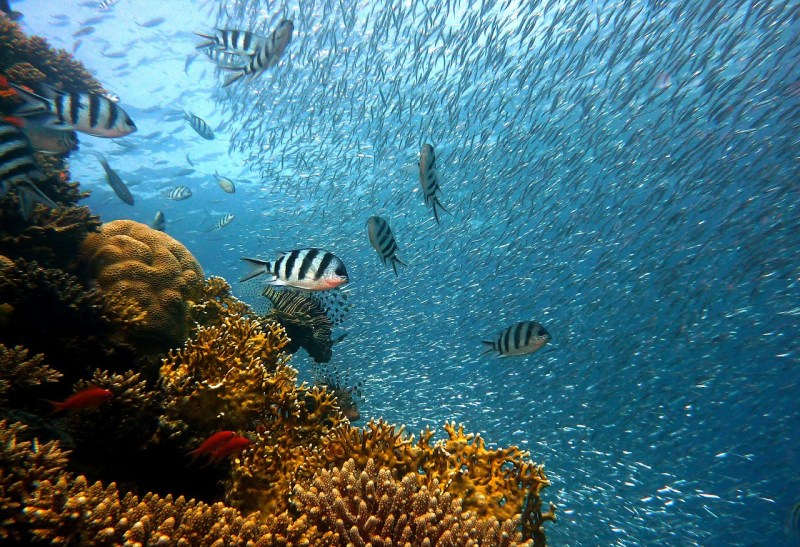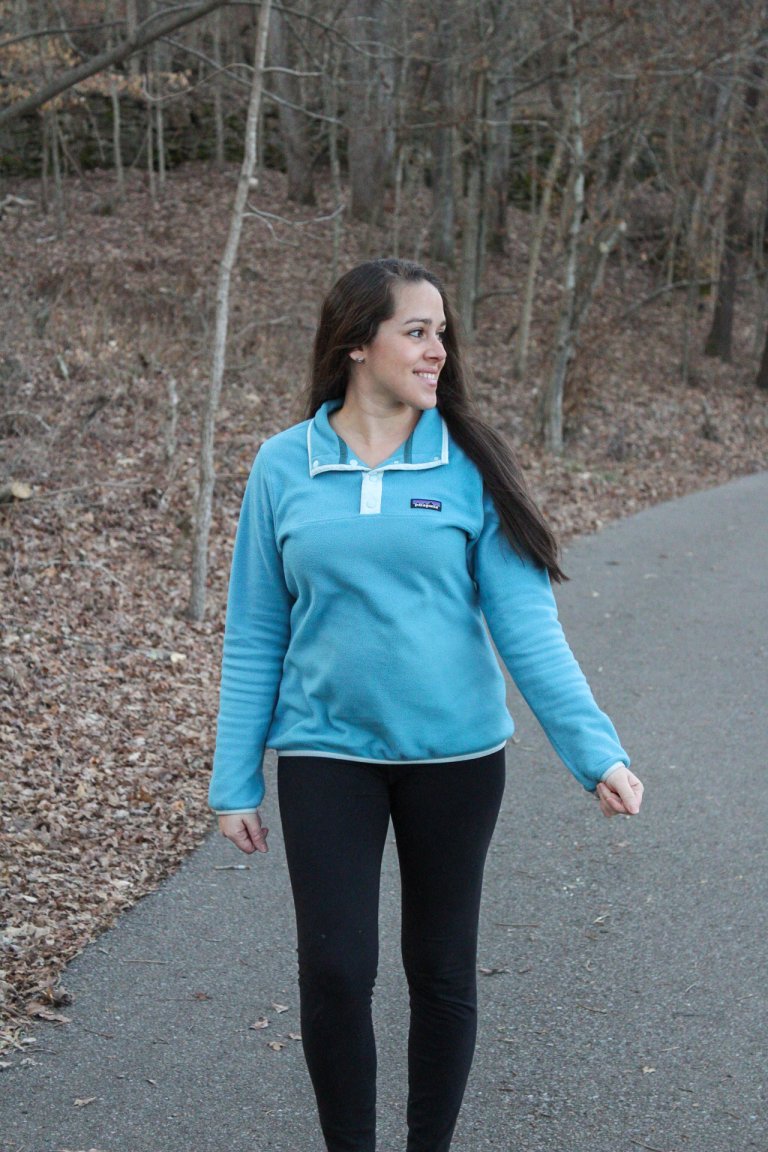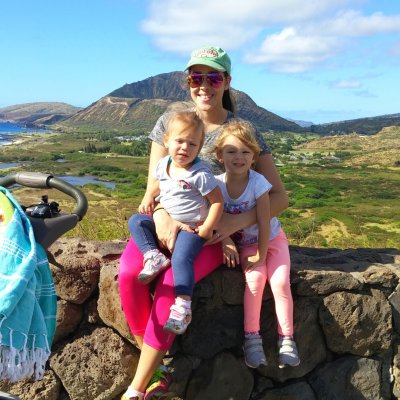The coral reefs in our ocean are dying and it is all our fault! In the last decade or so, ten perfect of our coral reefs around the entire world have died or have already been destroyed. We need to make a difference and that starts with the sunscreen that we use. Our sunscreen contains toxic chemicals both for our oceans and our bodies but don’t feel bad. You can make a difference with a few simple changes such as using reef safe sunscreen.


Disclaimer: There are affiliate links in this post. To learn more about how affiliate links work please read our Disclosure Policy. Thank you for using our links and for your support.
HOW SUNSCREENS ARE KILLING OUR CORAL REEFS
Majority of sunscreens contain toxic chemicals that are not good for our oceans and slowly destroying our coral reefs. That sunscreen that you apply before swimming most likely may not stay on your skin. When we are swimming or even showering, the sunscreen washes off entering our waterways. When this sunscreen enters our waterways, it will contact anything it touches causing a negative impact to the environment.
According to The Ocean Foundation –
An estimated 14,000 TONS of sunscreen is believed to be deposited in oceans annually with the greatest damage found in popular reef areas such as Hawaii and the Caribbean.
They also stated on their post here that one of the key ingredients in most chemical sunscreens is oxybenzone which is a synthetic molecule known to be toxic to not just corals but to algae, sea urchins, fish, and mammals. One single drop of this compound in more than 4 million gallons of water is enough to endanger organisms. That is one strong and deadly compound. Remember that this is the same compound that you are applying many drops of directly to your own skin!

CORAL BLEACHING
The toxic chemicals in the sunscreens can be very dangerous to our reefs in a variety of ways. Some of these include sunscreen accumulating in the tissues of coral reefs leading to coral bleaching, damage to the DNA, deformity, and even death.
According to The Blonde Abroad on this post she explains that… When the chemical in sunscreen get into the water, they can cause damage to the DNA limiting their growth and ability to develop in a healthy way leading to lack of reproduction.
Coral reefs usually start to bleach when the water’s temperature is anywhere above 81 degrees. Sadly when Oxybenzone comes in contact with the water and the reefs, coral will start bleaching at 78 degrees.
Kiersten explains this very well. At first I thought to myself, “Oh, that’s not that much!” but it really is A LOT! Look at it as if you were getting a fever. It’s usually just a few degrees higher than your normal body temp and it can be so uncomfortable and miserable for you.
TOXIC CHEMICALS IN SUNSCREENS:
I have provided a list of toxic chemicals that can be found in sunscreens. This list has been created by several resources (listed at the end) that specialize in preserving and caring for our oceans and our environment.
- Oxybenzone (Benzophenone-3)
- Benzophenone-2
- Benzophenone-8
- OD-PABA
- Octinoxate (Octyl methoxycinnamate)
- Butylparaben
- 4-Methylobenzylidine Camphor
- 3-Benzylidene Camphor
- Nano-Titanium Dioxide
- Nano-Zinc Oxide
Related Article: 11 Ways To Protect Our Coral Reefs

HOW IS SUNSCREEN CHEMICALS ENTERING OUR OCEANS
Have you ever gotten in the water and seen a film around you at the top of the water? I know I have. This is your sunscreen in the water. These toxic sunscreens don’t remain on your skin while you swim. Sadly they also swim with the water molecules in our ocean and eventually our reefs and other marine environments causing damage in the ecosystem. By switching to a reef safe sunscreen you can make a WORLD of a difference.
WHAT IS REEF SAFE SUNSCREEN?
A reef safe sunscreen is a sunscreen that doesn’t contain any toxic chemicals that will slowly damage our coral reefs. It is FDA approved and also has natural ingredients in them making them healthier options for you to use as well. Reef safe and all organic and natural sunblocks are also a perfect options for babies, kids, and people with sensitive skin or certain skin conditions.

WHY YOU SHOULD BE USING NON-TOXIC SUNSCREEN!
Our skin is the largest organ on our bodies. What we put on our skin will filter through into our bloodstream making it much harder for it to filter out. This is why it is very important for us to pay close attention to what we put on our skins and take very good care of it. It doesn’t only affect your appearance but your health.
I don’t say this just for sunscreens but also for soaps, lotions, lip butters, shampoo, conditioner and any other products that you may apply to your skin.
Related Article: Bend Soap Company
DON’T USE SPRAY ON SUNSCREENS OR SPF LIP BALMS
When using spray on sunscreens they are most likely going to have chemicals in them that aren’t good for you. While spraying on these sunscreens, you are not just putting toxic chemicals on your skin but also inhaling these fumes. Sunscreen is made to be put on your skin but not to be inhaled so this is something to really thing about when purchasing spray sunscreens. In my personal opinion I would avoid aerosols. The chemical ingredients in these will expel the chemicals not just on to your skin but into your lungs, and even airborne into the environment.
Another one that is not the safest option for you is SPF lip balms. By applying anything on your lips you run the risk of ingesting these chemicals throughout the day. I highly recommend using lip butters that are all organic and natural. Raw Elements and Bend Soap Company have a few lip balms that are all natural and good for you.
Related Article: Best Moisturizer For Dry Skin

BEST REEF SAFE SUNSCREENS TO USE!
Best way to avoid toxic sunscreens that are not reef safe is by purchasing products that are mineral sunblocks. Some of the key ingredients to look for is zinc oxide and titanium dioxide and making sure it says “non-nano”. These are the only ones that are considered to be reef-safe.
I have helped you narrow your search. The list below consists of reef-safe and natural sunscreens.
- Raw Elements (You can get it at Amazon at full price or on their website at 10% off with code TWM10 )
- Sun Bum
- Two Peas
- Ethical Zinc
- Coola
- Think Sport
- Amavara
- Surface
- Goddess Garden
- All Good
- Sunology
- ColoreScience
ColoreScience also has this very amazing article that goes over the ingredients that are considered safe for both you and the environment.
OTHER OPTIONS BESIDES SUNSCREEN
If you don’t want to use sunscreen it’s ok. There are other options that may work for you. Regardless, it is very important to always take good care of your skin to avoid other health issues such as sunburns and skin cancer to name a few. Some of these options are:
- Only be exposed to the sun very early in the morning before the sun is at its hottest peak time or very late in the afternoon. It is very important to plan your day around the sun if you are going to be outdoors and in direct contact with the sun.
- Use an umbrella when at the beach to cover yourself from the sun.
- Wear a rashguard, swimsuit cover, shirt, hat, and even certain sunglasses with SPF that will protect you from the sun. You can find some very good options here at Target and Amazon.
- Seek shade and lay under trees.
- Bring your own canopy for shade as well.
*Use coupon code TWM10 at Raw Elements for a 10% off your purchase. This is the brand of sunblock that I use and swear by. Just a little bit will go a long ways. It is very thick and even waterproof.

TOGETHER WE CAN MAKE A DIFFERENCE
I am here to help raise awareness on this environmental issue. I highly believe that if we work together we can make a change in our world for the better. One of these ways is to raise awareness and live by example. I hope that you can find this post useful. If you believe that together we can make a change in the world please help me spread the word by clicking share below.
Is there a sunscreen that you use that I didn’t mention? or any other tips you may want to share? I would love to hear what you use or do to care for our oceans. Let me know in the comments below so we can chat about our conscious ways. I love learning new things from my readers.
Also, if you enjoyed this article feel free to sign up for our newsletter here or follow our adventures on Instagram so you can stay up to date on upcoming travel adventures, tips, gear reviews, recipes and more. Thank you for reading.










4 Responses
Thank you for such an insightful post. I am ashamed to say this is something I knew nothing about. I appreciate the handy list of Reef Safe suncreams and will do some further research.
Hi Sarah, Don’t feel bad. I didn’t know about it till about 4 years ago. I didn’t do more research though till recently and that’s when I really started watching what I used. I’m glad that it was an insightful post for you. Glad to have spread the word about these issues and how you can make a difference.
Hi momma! I believe SunBum is not Reef Safe… I could be wrong but I am pretty sure.
Hi Michelle, Yes you are right that SunBum does have a non-reef safe line but they have recently launched a mineral line which is Reef safe. I may have linked the wrong one though now that you have brought it to my attention. I will fox that. Their mineral line comes in the white bottles versus the brown and yellow ones.